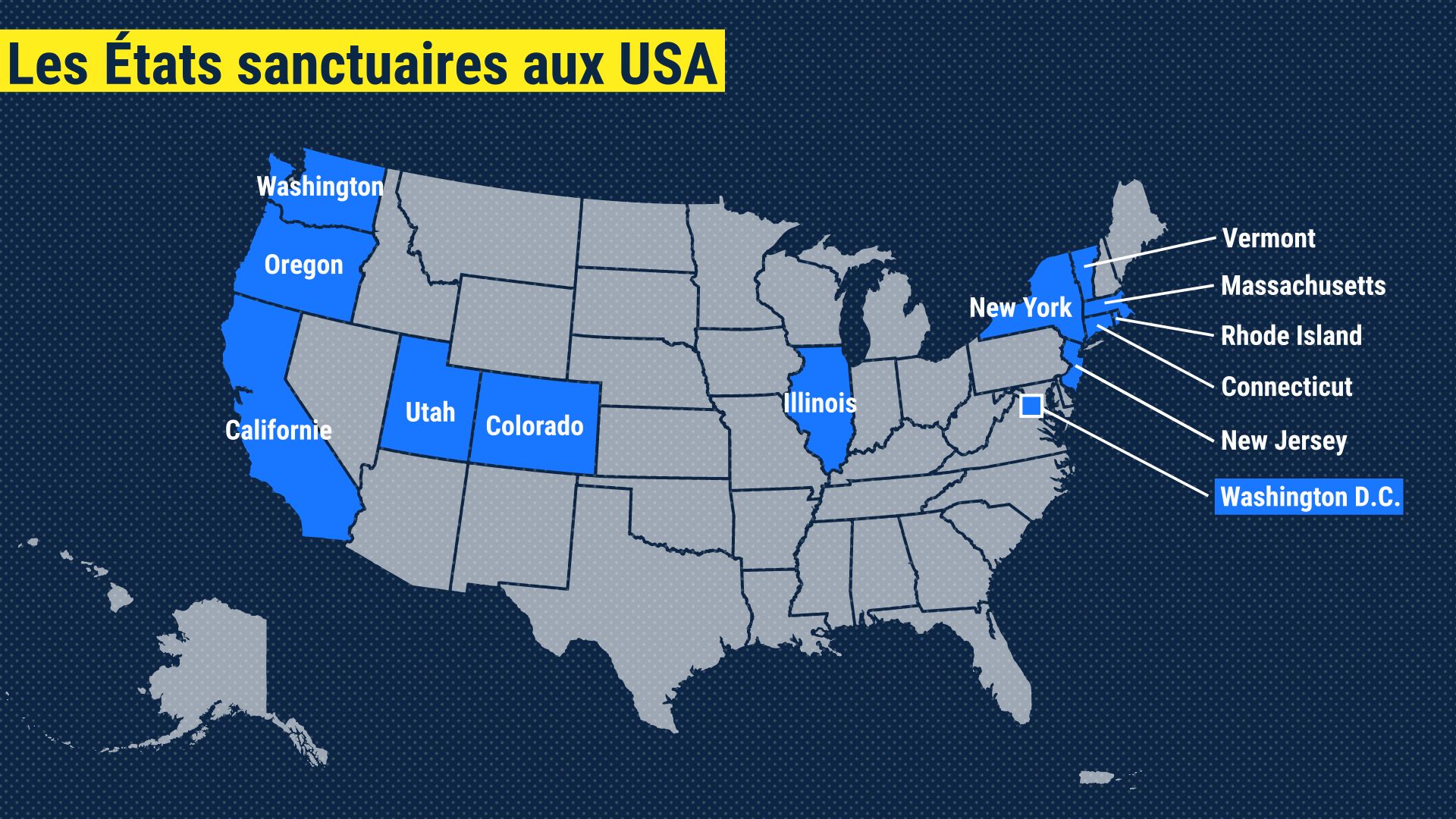
Did you know that in May 2025, a black woman in the American South was murdered by half a dozen young whites? Did you also know that the mainstream media did not seem to show the slightest interest in the matter of an African-American mother minding her own business who was suddenly shot to death by six white youths between the ages of 13 and 21? Isn't that unheard of? You would think that such a tragedy would be fodder for the news (whether or not they were part of the left's race-baiters), wouldn't you? Doesn't the name of Larisha Sharrell Thompson deserve to be as well-known as that of George Floyd?
Well, here is the reason why Larisha's name and fate are unknown: the young white killers of Larisha Sharrell Thompson were not good ol' Southe'n boys (ol' or young), or American citizens of any kind. They were illegal aliens.
Hardly a week goes by when we don't read (except, needless to say, in the mainstream media — including abroad, such as Belgium's RTBF, entirely partisan) about another illegal alien committing a crime or getting extraordinarily good treatment (not excluding total ignorance or censorship by the above-mentioned MSM). (Thanks for the Instalink, Sarah…)
 Here is a partial list of criminals. Just in case you get tired of reading the list — yes, it's that long — be sure to read the excerpts from Catherine Salgado and John Lott's articles at the bottom of this post (below the photo of the illegals crossing the Rio Grande)…
Here is a partial list of criminals. Just in case you get tired of reading the list — yes, it's that long — be sure to read the excerpts from Catherine Salgado and John Lott's articles at the bottom of this post (below the photo of the illegals crossing the Rio Grande)…
• In June 2024, a 12-year-old, Jocelyn Nungaray, was sexually assaulted and killed by two illegal immigrant suspects, Johan Jose Martinez-Rangel, 22, and Franklin Jose Peña Ramos, 26, who then dumped her body in a Houston bayou. The latter "was wearing an ankle monitor at the
time he allegedly murdered Nungaray that was provided to him when he was
arrested by Border Patrol agents after entering the country illegally and being released from custody".
• Daily Wire: Illegal Immigrant Posed As Doctor, Sexually Assaulted 10-Year-Old At Elementary School
• Cory Alvarez (Massachusetts Court Gives Haitian Illegal Alien Accused of Child Rape $500 Bond)
• Melvin Jesus Aquino Enriquez (Illegal immigrant charged with murder of 3-month-old baby)
• Nyo Mint: The Illegal alien whose deportation was paused by ‘activist’ judge sexually assaulted a disabled woman

• One of the main problem with illegals, it turns out, is not that they steal and eat cats (although that has not, contrary to what the MSM claims, been disproven), but that they do not know, and have never learned, how to drive up to Western standards, unless of course they simply don't care one way or the other — such as or underage teen drivers arrested for driving without a license (and then released). Teen illegal immigrant who killed woman in Colorado crash gets probation
• Progressive prosecutor lets illegal immigrant teen off easy after 90-mph crash that killed 24-year-old woman
• They do not know how to drive, or operate, whether it is cars or other types of vehicles. Two illegal immigrants from Venezuela were arrested in the death of 18-year-old Air Force cadet candidate Ava Moore (photo above), who was kayaking when she was allegedly struck by a jet ski.

• Sheriff slams law enforcement agencies for releasing illegal immigrant who allegedly hit Ohio nurse
An Ohio sheriff slammed fellow law enforcement agencies for previously releasing an illegal immigrant with an extensive criminal history, after he allegedly crashed into an Ohio nurse while driving drunk, leaving her seriously injured.
Johen Perez-Ventura, 27, an illegal immigrant from Guatemala, is charged with aggravated vehicular assault, driving without a license and obstruction of justice, according to Butler County Sheriff Richard Jones.
… He returned to the U.S. at some point and in 2023 was charged with assault in Cincinnati.
That same year, he was arrested and charged with drunk driving in Westchester, Jones said. Perez-Ventura was released after both arrests.
However, Perez-Ventura's criminal history didn't end there. In 2024, he was arrested twice for drunk driving, and released again.
… "He doesn't care. You look at his mug shot, he has a smirk on his face," Jones said.
• Two men have been arrested in connection with the April 2015 theft of Homeland Security Kristi Noem's purse, both of whom (one, Mario Bustamante Leiva of Chili, has been named) are illegal immigrants
• Shouting "Free Palestine" and "End Israel", The Egyptian national who firebombed people in a terror attack in a Colorado park turns out to be an illegal alien (Boulder's Police immediately claimed that we cannot yet figure out Mohamed Soliman's motivations: "We're not calling it a terror attack at this point," that "would be irresponsible" and "way too early to speculate motive.")
• California is set to release an illegal immigrant convicted of killing two teenagers over six years before his sentence was set to conclude, it was learned in April 2025. Fox News:
Oscar
Eduardo Ortega-Anguiano was driving drunk at high speed in 2021 when he
crashed into a car carrying 19-year-olds Anya Varfolomeev and Nicholay
Osokin. Both teens were killed in the fiery wreck. Ortega-Anguiano was
later convicted of two counts of gross vehicular manslaughter while intoxicated and sentenced to 10 years in prison in 2022.
Now, California officials say he will be released early, sparking outrage from the victims' families and immigration officials.
Ortega-Anguiano has an extensive criminal history. He was convicted of
burglary in 2005 and stealing a car in 2007. He was also convicted of
battery and kidnapping in 2014. … Tom Homan … noted that Ortega-Anguiano is now a felon because he has already been deported multiple times.
• On August 3, 2024, German Adriano Llangari Inga “of Minneapolis” was charged with driving drunk, unlicensed, and uninsured when he killed Victoria Eileen Harwell in a head-on crash. The local press did not want to admit he was an illegal alien and the local Minnesota authorities released the Ecuador native from jail. The Fox News story quoted the White House:
“An illegal immigrant drove drunk, killed an innocent
mother, and is now on the run because Democrats didn’t do their most
important job: protect their constituents,” Alex Pfeiffer, White House
Principal Deputy Communications Director, told Fox News Digital in an
exclusive statement. [Llangari Inga has since been apprehended.]
“This is precisely why the Trump Administration is taking action to
hold these so-called ‘sanctuary’ jurisdictions accountable,” he added.

• A black woman is murdered by half a dozen whites, but MSM outlets show no interest, since the whites are not Americans but illegal aliens:
Authorities in Lancaster, South Carolina, have charged six illegal immigrants
between the ages of 13 and 21 in connection with the "random" May 2
murder of a mother [Larisha Sharrell Thompson] who was driving to meet friends in Rock Hill.
• We could go on, but Ann Coulter provides the list: 9/11, San Bernardino, the Boston Marathon, Fort Hood, Pulse nightclub,
Kate Steinle, Laken Riley, Mollie Tibbets, Ana Navarro, etc. etc. etc.
etc.)… She has a more specific list of illegal aliens that Alejandro Mayorkas let into the country. only to commit the most heinous of crimes.
Apparently, some rash individuals have drawn a connection between Mayorkas' vast human trafficking operation, which brought gang members, child molesters, thieves, rapists and murderers to our country, and the crimes they committed.
… It may look like Mayorkas [aka the biggest human trafficker in world history] hustled aliens into our country in violation of Title 8 when he fast-tracked them across the border and flew them into the U.S. interior under the cover of darkness, where they were released into our country to spawn like salmon and kill a lot of people.
"The principal problem with hauling tens of millions of third worlders into our country", Ann Coulter quips,
is that we're hauling tens of millions of third worlders into our country. By now, we're about two years away from becoming another failed Latin American state, if you'll forgive the redundancy.
• Here is Ann Coulter's report on one illegal alien from Guatemala: 'Ohio Man' Rapes 10-Year-Old:
For several decades now, the position of government officials, both political parties, think tanks, the Bush family, district attorneys and the entire media has been: We're going to foist primitive, peasant cultures on America and then lie to the public about how this is changing our country.
We recently found out about one big way that third-world immigrants are enriching us. Soon after the Supreme Court overturned Roe v. Wade, the media began talking nonstop about a "10-year-old rape victim" who couldn't get an abortion in Ohio and had to travel to Indiana. The "10-year-old rape victim" was discussed on a loop on MSNBC and even made it into a speech by President Joe Biden.
But then, a bunch of spoilsports started questioning whether "10-year-old rape victim" existed. The attorney general of Ohio said on July 12 he had no evidence of a 10-year-old rape victim, despite the reporting of such a crime being mandatory.
With their backs against the wall, the pro-abortion crowd broke longstanding strictures against mentioning the rapey-ness of our "New Americans" by producing the rapist: Gerson Fuentes, 27, an illegal alien from Guatemala.
… The abortion ladies thought they could get away with revealing the child rape victim, while refusing to reveal the child rape perpetrator. When that failed, they wantonly defied the rest of their coalition and told the truth about one of the Democrats' pets, an illegal immigrant.
Once the pro-abortion crowd identified the rapist, nothing about the story was surprising. It has all the earmarks of an immigrant child rape:
The crime is particularly vile -- CHECK!
The raping had been going on for some time -- CHECK!
The mother defended her daughter's rapist -- CHECK!
The rapist is shocked that anyone thinks he did anything wrong -- CHECK!
… WHY DOESN'T THE PUBLIC KNOW ABOUT THIS?
Unfortunately, our media are too busy reporting on apocryphal gang rapes by the Duke lacrosse team and "frat boys" at the University of Virginia to bother mentioning the epidemic of child rape by immigrants from peasant cultures pouring into our country by the million.
How far into the stories about UVA and Duke did you have to read to find out that the (falsely) accused rapists were "privileged white men"?
By contrast, whenever the media deign to mention an immigrant rapist, the story will appear in -- at most -- one local newspaper. Further, both the heinous nature of the crime and the immigration status of the rapist will be hidden. (How about a news report on the Duke lacrosse case, appearing exclusively in the local paper at the bottom of page A-18, titled, "Area Men Arrested.")

Certainly, there is nothing wrong with pointing out that all illegal are not criminals (except that, by the very fact of entering illegally into a country that is not theirs, they are all of them are ipso facto lawbreakers).
Having said that, it is established that authorities leaning left underreport — deliberately underreport, needless to say — the crime rates of illegal immigrants (see next bullet point). Whatever the case, it seems that the main problem is not with the right; the real problem is that for the left, all "undocumented workers" (or "non-citizens") without exception are nothing but the most honest and respectable and hard-working of (would-be) citizens, those whom said left's drama queens praise to the Heavens and glorifies with panegyrics such as the dreamers.
• Indeed, it turns out that, according to Real Clear Politics, the Crime Rates of Illegal Migrants [Are — Deliberately—] Underreported. Listen to John R. Lott Jr:
Democrats frequently claim, almost as an article of faith, that illegal immigrants are less prone to commit crime.
… This tenet is incessantly parroted by the legacy news media. Sample headline, this one from ABC News: “No, migrants are not driving a surge in violent crime as Trump claims.” ABC asserted that crime in this country is declining despite an influx of illegal immigrants.
… But is this “the truth”? Are these “the facts”?"
The data suggests that the answer is pretty clearly “no.”
These claims usually conflate legal and
illegal immigrants. Legal immigrants tend to follow the law, but illegal
immigrants are a different story.
[For example, a] Maricopa County Attorney’s Office study revealed
that illegal immigrants committed 21.8% of felonies sentenced in
Maricopa County Superior Court, over twice their proportion of Arizona’s
population. Mexican nationals alone accounted for 13% of inmates in the
state prison system.
Earlier work that the Crime Prevention Research Center did for the Arizona County
Prosecutor’s Association also found that illegals made up a
disproportionate share of the Arizona prison population [while] legal
immigrants were more law-abiding than the general population. Illegal
immigrants are at least 142% more likely to be convicted of a crime than
other Arizonans. They also tend to commit more serious crimes and serve
10.5% longer sentences, are more likely to be classified as dangerous,
and are 45% more likely to be gang members than U.S. citizens.
… Critics like the Washington Post … ignore a key issue: Criminals often target those similar to themselves.
Illegal immigrants, therefore, are more likely to commit crimes against
other illegal immigrants. These crimes often go unreported – for fear
of deportation – and as the local population of illegal immigrants
grows, underreporting almost certainly increases.
In Sanctuary Cities: The Dangerous Illusion of Virtue, Kevin Cohen explains that
Sanctuary cities are a triumph of superficial compassion over practical morality. Cloaked in righteous language, these jurisdictions promise safety and sanctuary to migrants while recklessly disregarding their primary obligation: the protection of their own citizens. Beneath their virtuous façade, sanctuary cities are playing a perilous political game, using migrants as mere pawns in pursuit of electoral dominance. (RELATED: The Scandinavian Lesson: What Malmö Warns Us About America’s Sanctuary Cities)
… In reality, the sanctuary concept, originally noble in intent, has been cynically weaponized to secure political capital, disregarding the catastrophic impact on community safety. (RELATED: How to Stop Sanctuary City Insanity)
Recognizing the severity of this crisis, on May 8, 2025, the Trump administration decisively acted against Colorado and Denver, suing both jurisdictions for actively hampering immigration enforcement. Concurrently, President Trump signed Executive Order 14159, expediting deportations and severing federal funding to sanctuary cities. Far from political theatrics, these were essential moves to counteract ideological recklessness with firm measures rooted in reality. (RELATED: Sanctuary Cities Are in Insurrection)
… Ultimately, sanctuary cities demonstrate not genuine moral courage but profound ethical bankruptcy. They weaponize humanitarian rhetoric for electoral advantage, exploiting minority, Latino, and migrant communities for votes. This cynical political calculation — detached from ethical principles, indifferent to safety, and dismissive of real-world outcomes — must be confronted clearly, urgently, and decisively rejected.
Across the Atlantic Ocean, Belgian TV has a(n of course uplifting) documentary on États sanctuaires et villes rebelles although, needless to say, it is ignoring the fact that Europe Is “Killing Itself” By Permitting Mass Immigration. See also 'Jobs Americans Won't Do': The Lie That Broke a Nation and the Economic and Social Devastation It Hid.

As we end this post, let us turn to the most (in)famous of recent illegal aliens: Kilmar Abrego Garcia, aka The Poster Child for the Left’s Demands of Endless “Due Process”:
the Left is using Kilmar Abrego Garcia as their poster child to demand “more due process.” It’s time to correct this intended confusion and show just how much due process aliens receive. … These are civil proceedings, not criminal. … That means deportable aliens in deportation proceedings do not have the same rights as a person in a criminal trial, such as being innocent until proven guilty, the right to a taxpayer funded public defendant, etc. Removing a deportable alien is not a criminal sentence.
… The Left demands Abrego Garcia be returned to the U.S. and receive his due process. Once again, they are being dishonest with the American public.
They ignore the fact that Garcia didn’t follow the process due Americans to seek a visa or refugee protection to come here lawfully. Nor do they admit that he failed to request asylum soon after his illegal entry.
And they fail to acknowledge that Garcia already received due process at his third opportunity. He is owed no more.
… The fact that the Left has made this criminal gang member their poster child for due process has only opened more Americans’ eyes to the complete abuse of our immigration system.

One Oregon prosecutor, writes Catherine Salgado
(gracias to Stephen Green, who calls it CRISIS BY DESIGN), claims that it doesn’t matter at all in an attempted murder case if the violent criminal was an illegal alien or not.
The victim would likely beg to differ, considering her attacker probably
should never have been in the country and anywhere near her to begin
with.
After a “Portland man” slit a woman’s throat, journalist Andy Ngo asked
the Oregon county’s prosecutor whether the accused criminal is an
illegal alien. But the prosecutor claimed that was irrelevant
information to the case. Ah, to live in a Democrat-run paradise, where
the criminals are protected and the victims are despised.
“A ‘Portland man’ named Manuel Jesus Huchin-Interian was convicted for
slashing the throat of a woman and leaving her to bleed out on the
ground,” Ngo explained.
“The victim narrowly survived with the eight-inch neck wound.” Amazing
how Democrats are spending so much time and effort bewailing illegal
alien criminals like accused drug- and human-trafficking Kilmar Abrego Garcia and the “Pomona father” who is actually a felon, while they never have time for the victims of illegal alien crime.
… We will probably never know the true extent of illegal alien crime
because Democrat states and officials are so zealous in hiding
statistics on how many people are robbed, raped, and killed by illegals.
… The victims of illegal alien crime, including Laken Riley, Rachel Morin, Jocelyn Nungaray, Ivory Smith, Nate Baker (whose killer was previously ordered deported), David Lee, and Travis Wolfe, received little to no attention from Democrats. We have not forgotten how Joe Biden called Laken “Lincoln,” or how the Democrat congressmen refused to stand or applaud to honor Jocelyn’s and Laken’s mothers.


.jpeg)
























